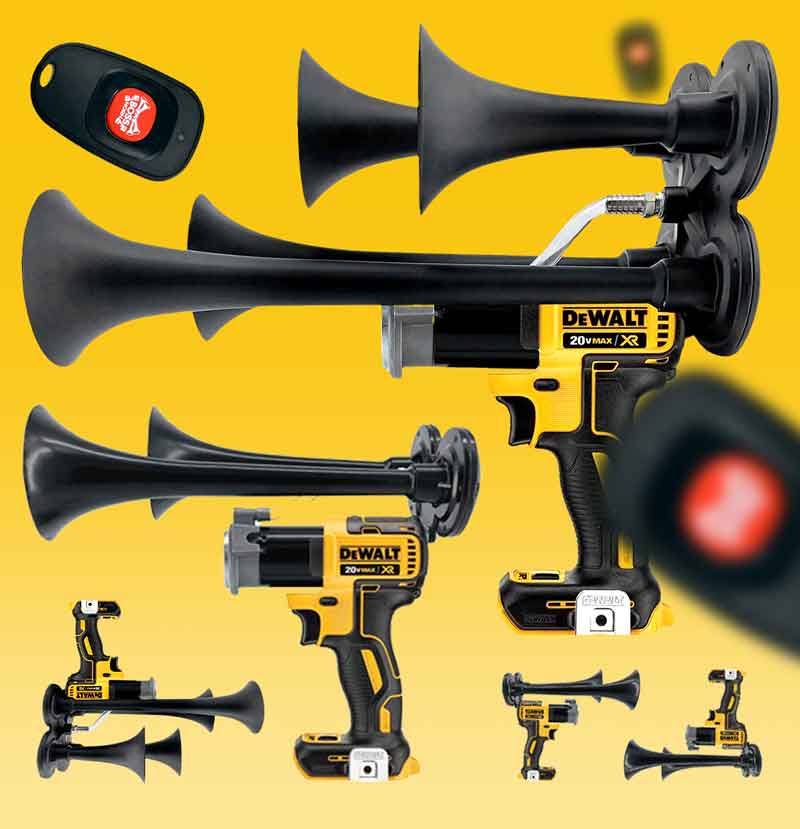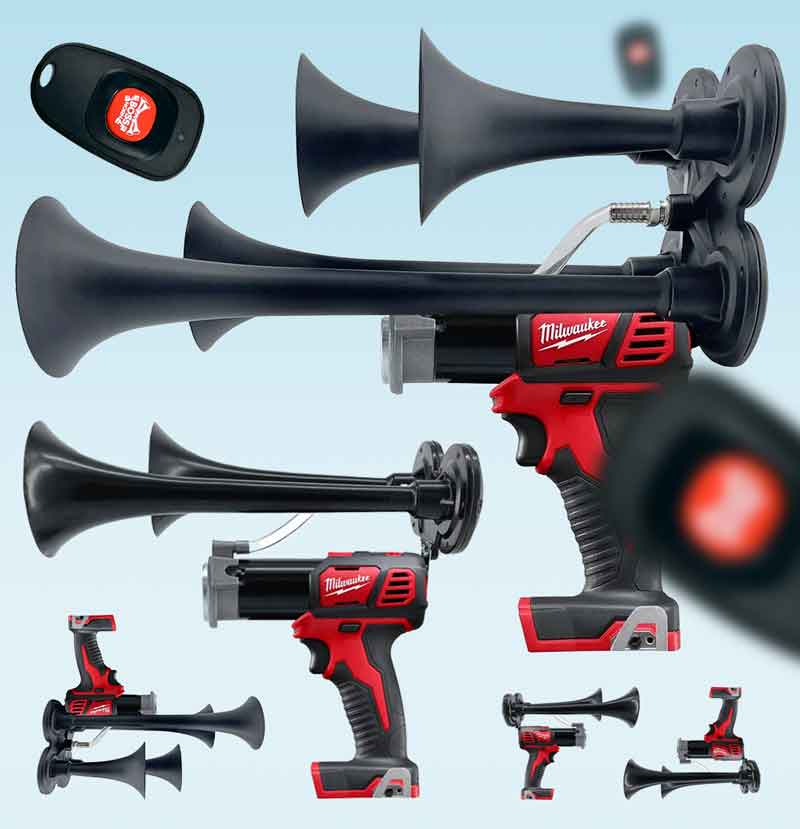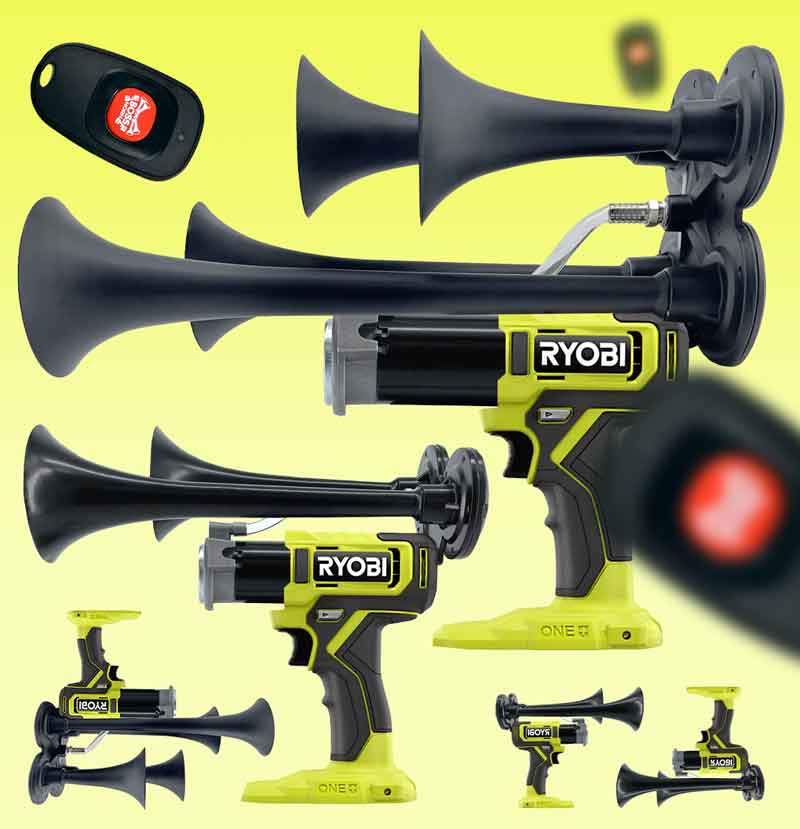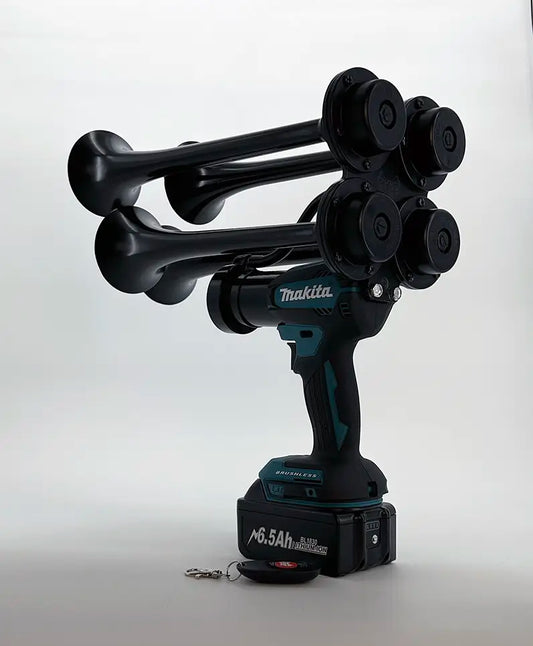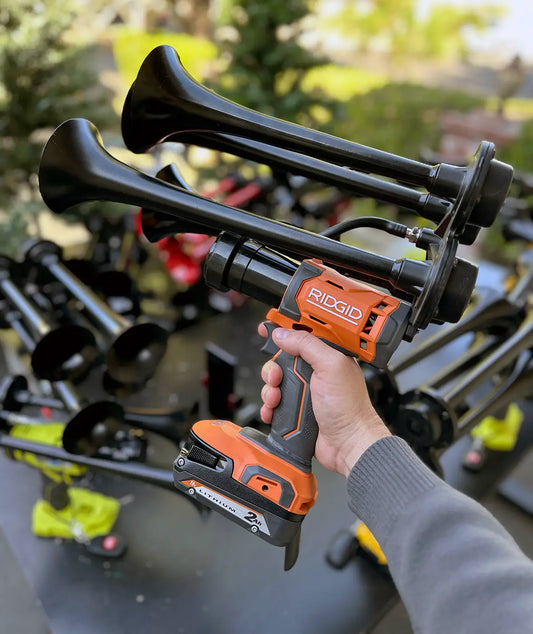Did you know that the sound of a train horn can travel up to a mile in distance on a quiet night? It's a distinct noise that has been a part of our history for many years. The origins of the train horn can be traced back to the early 1800s when locomotives were first introduced. These early horns were simple and not very loud, but they served their purpose of warning pedestrians and other vehicles of an approaching train. Over time, the design and sound of the train horn evolved, becoming louder and more powerful.
Today, the train horn still plays a vital role in our transportation system. It provides an important safety feature by alerting pedestrians and drivers to the presence of a train, especially at railroad crossings. In fact, studies have shown that the sound of a train horn can prevent accidents and save lives. According to the Federal Railroad Administration, train horns are estimated to have contributed to a 66% decrease in train-vehicle collisions between 1978 and 2000.
Despite its significance, the train horn has also become a subject of controversy in some communities. The loud and frequent blasts can be disruptive, particularly in areas where train traffic is heavy. In response, various measures have been taken to address this issue. One solution is the implementation of wayside horns, which are stationary devices placed at railroad crossing locations. These horns direct the sound towards the roadway, reducing the noise impact on surrounding neighborhoods.
Furthermore, advancements in technology have led to the development of quieter train horns. These horns are designed to emit a lower frequency sound that is less disruptive to the surrounding environment, while still serving the purpose of warning people of an approaching train. This innovation aims to strike a balance between safety and noise reduction, ensuring that our transportation system remains efficient and respectful of the communities it serves.
In conclusion, the train horn is a significant aspect of our transportation system, serving as a crucial safety feature. Its evolution throughout history has led to the development of more powerful and efficient horns. However, the noise impact of train horns has become a concern in some communities. To address this issue, wayside horns and quieter horn designs have been introduced. By striking a balance between safety and noise reduction, we can continue to appreciate the importance of the train horn without compromising the well-being of our communities.
What is the significance of the nostalgic train horn sound in today's world?
Evolution of Train Horn Sounds
Train horns have played a critical role in the safe operation of trains around the world for over a century. Over time, the sound of train horns has evolved, shaped by technological advancements and changing regulations. Let's dive into the fascinating history of train horn sounds.
The Early Days
During the early days of rail travel, train horns were relatively simple and produced a loud, echoing sound. These early horns were typically operated by a lever and were manually blown by the train's engineer when approaching crossings or to alert pedestrians and animals.
Steam Whistles
As steam locomotives became more common, train horns evolved into steam whistles. These whistles used steam pressure to produce their distinct sound. The size and shape of the whistle determined the sound it produced, with longer and larger whistles providing a deeper tone. Steam whistles could be heard for miles, providing an effective warning signal for both crossing traffic and people in the vicinity of the tracks.
Air Horns
In the early 1900s, air horns started to replace steam whistles as the primary horn system on trains. Air horns utilized compressed air to produce loud, distinctive tones. Compared to steam whistles, air horns were more reliable and required less maintenance. They also offered greater control over the sound produced, allowing engineers to vary the pitch and duration of the horn blasts.
Regulations and Modernization
As train technology advanced and traffic congestion increased, regulations regarding train horn sounds were implemented to ensure safety. In the United States, the Federal Railroad Administration (FRA) established rules for train horn usage. These regulations mandated the decibel level of train horns and the minimum distance they must be audible from. These measures aimed to ensure that train horns could effectively alert motorists and pedestrians of an approaching train.
Current Train Horn Sounds
Today, train horn sounds vary depending on the region and the specific regulations in place. Different countries have their own standards, which may dictate the type of horn system used, the decibel level, and the pattern of horn blasts. Some train horns produce a pattern of long and short blasts, while others utilize different tones or sequences.
In recent years, there has been a focus on reducing unnecessary noise pollution from train horns. Some urban areas have implemented "quiet zones" where train engineers are not required to sound the horn at every crossing. Instead, additional safety measures such as barriers and warning lights are employed to ensure safety.
Train Horn Sound Statistics
- A typical train horn can produce sound between 95 and 120 decibels.
- Train horns are designed to be audible from a minimum distance of 1/4 to 1/2 mile away.
- The pitch and duration of train horn sounds can vary depending on the type of horn system used.
- In the United States, train horns must be at least 96 decibels and no louder than 110 decibels when measured 100 feet in front of the train.
- Train horn patterns often follow specific sequences, such as two long blasts, one short, and one long blast.
https://youtube.com/watch?v=qv51EqZA8eE
1. The Nostalgic Sound:
Why do vintage trains have a distinctive noise?
Vintage trains emit a unique auditory experience that holds a special place in many people's hearts. The reason behind this distinct sound lies in the design and engineering of these historical locomotives.
Key information:
1. Distinctive sound associated with vintage trains
2. Rooted in the engineering and design of historical locomotives
3. Holds a nostalgic value for many individuals
The steam-powered locomotives of old were equipped with a specific type of whistle, which contributed to the characteristic sound that became synonymous with trains during that era. This whistle was known for its loud and resonating tone that could travel long distances, penetrating through the surrounding environment. As the steam built up within the boiler, it would escape through the whistle, creating a high-pressure blast of sound. The combination of steam and air produced a distinct pitch and volume, which captured the attention of bystanders and served as an audible signal for train operations. This iconic noise has become deeply ingrained in popular culture, evoking feelings of nostalgia and reminding us of a bygone era of rail travel.
2. Mechanical Marvels:
How were old train horns operated?
The operation of old train horns was a mechanical process that required both skill and precision. Understanding the fundamental principles can shed light on the impressive mechanics behind this historical marvel.
Key information:
1. Mechanical operation of train horns
2. Skill and precision needed for operation
3. Highlighting the impressive mechanics of old train horns
The horns of vintage trains were operated manually by the locomotive engineer or fireman. They were typically controlled through a lever or valve located inside the cab, allowing for precise modulation of the horn's sound. When the engineer desired to sound the horn, they would pull the lever, effectively opening a valve that allowed steam to flow through the whistle. The amount of steam released would dictate the tone and volume of the resulting sound. Engineers would need to gauge the appropriate amount of steam required for the desired signal, whether it be a long blast to announce the train's arrival or short bursts to warn of departure. This intricate process showcased the expertise of railroad personnel and demonstrated their ability to convey audible messages in an era before modern communication systems.
3. Safety Signals:
What was the purpose of the old train horn sound?
The sound of old train horns was instrumental in ensuring the safety of both railway passengers and those residing near railroad tracks. Understanding the underlying purpose behind this unmistakable noise helps highlight its vital role in the operation of vintage trains.
Key information:
1. Ensuring safety of train passengers and nearby residents
2. Undeniable importance of the old train horn sound
3. Role of horn as an audible warning signal
The primary purpose of the old train horn sound was to serve as a warning signal. Trains, especially during the era when steam locomotives were prevalent, required a means of alerting individuals of their presence. By emitting a distinct and attention-grabbing noise, the train could effectively communicate its approach, preventing potential accidents and allowing people to clear the tracks in time. The sound of the horn acted as an auditory cue, serving as a precautionary measure to ensure the safety of those in the vicinity. In addition to warning pedestrians and motorists, the horn also played a vital role in coordinating train movements and communicating between different trains on the same track, contributing to overall operational safety and efficiency.
4. Melodies of the Past:
Is the old train horn sound still used today?
While the traditional old train horn sound may not be as prevalent in modern railways due to technological advancements, remnants of this familiar auditory experience can still be found in certain contexts.
Key information:
1. Decline of old train horn sound in modern railways
2. Persistence of the sound in specific contexts
3. Retention of the iconic auditory experience
With the advent of electric and diesel locomotives, the need for steam-powered whistles diminished. Newer trains utilize electric horns or electronic sound systems that serve the same purpose with more efficient technology. However, in some heritage railway operations, museums, and preserved steam locomotives, the iconic old train horn sound is still used to recreate the atmosphere of historic train travel. These limited instances allow enthusiasts and visitors to experience the distinct melodies of the past, offering a glimpse into the rich history and cultural significance of old train travel. While the old train horn sound may have faded from mainstream use, preservation efforts ensure its enduring legacy.
5. Sonic Reminiscence:
Why does the old train horn sound evoke nostalgia?
The old train horn sound holds a special place in the hearts of many individuals, evoking a sense of nostalgia and fond memories. Understanding the factors that contribute to this sentiment sheds light on the emotional connection people have with this iconic auditory experience.
Key information:
1. Emotional attachment and nostalgia associated with old train horn sound
2. Connection to shared memories and cultural heritage
3. Factors contributing to the evocation of strong emotions
The old train horn sound's ability to evoke nostalgia can be attributed to various factors. Firstly, it represents a bygone era of train travel, a time when steam locomotives dominated the railways, and the world moved at a different pace. This romanticized perception of the past often triggers sentimental associations with simpler times and a longing for a sense of adventure and exploration. Additionally, the sound is deeply ingrained in popular culture, frequently appearing in films, literature, and music, further solidifying its nostalgic value. The auditory experience of the old train horn sound also acts as a connection to shared memories and a sense of cultural heritage, as trains were once a vital mode of transportation and an emblem of progress. Overall, the distinctive noise of vintage trains captivates our imagination, transporting us to a time that lives on in our collective memory.
Conclusion
In conclusion, the old train horn sound holds immense historical and cultural significance. Its unmistakable and powerful sound evokes a sense of nostalgia and charm that transports us back to a time when trains symbolized progress and adventure. Throughout this article, we have explored the history and characteristics of the old train horn sound, delving into its various components and variations.
We have learned that the old train horn sound is characterized by its deep, robust, and resonant tones, capable of carrying over vast distances. It served as an essential means of communication for trains, helping to signal their presence and warn others of their movements.
The distinctive sound of the old train horn has formed an integral part of the railway experience, acting as a sonic trademark that distinguishes trains from other forms of transportation. Its resounding notes were heard at level crossings, station arrivals and departures, and in the heart of bustling train yards.
While the old train horn sound may no longer be as prevalent today, with modern trains adopting newer, more standardized horn sounds, it continues to captivate train enthusiasts and history buffs alike. Its iconic melody lingers as a testament to the golden age of rail travel.
Overall, the old train horn sound represents a bygone era, embodying the essence of adventure, progress, and the romance of train travel. Its unique characteristics and historical importance ensure its enduring place in our memories and cultural heritage.









